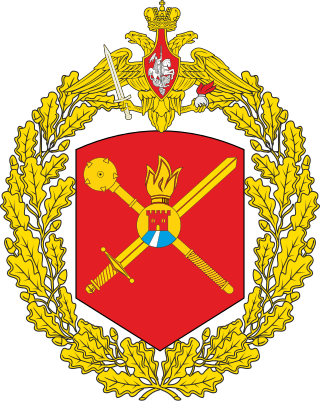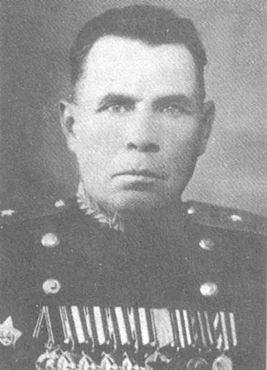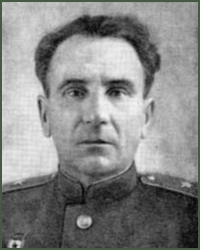The 270th Rifle Division was a Red Army infantry division formed twice during World War II, in 1941 and 1942.
The Red Army's 33rd Army was a Soviet field army during the Second World War. It was disbanded by being redesignated HQ Smolensk Military District in 1945.
The 19th Army was a field army of the Soviet Union's Red Army, formed in 1941 and active during the Second World War. The army was formed three times, although only two of its formations saw combat.
The 22nd Army was a field army of the Red Army during World War II.

The 49th Combined Arms Army is a combined arms (field) army (CAA) of the Russian Ground Forces, formed in 2010 and headquartered in Stavropol. Military Unit в/ч 35181.
The 48th Army was a field army of the Soviet Red Army, active from 1941 to 1945. The army was first formed in August 1941 and fought in the Leningrad Strategic Defensive Operation. The army suffered heavy losses and was disbanded in early September. Its remnants were moved to the 54th Army. Reformed in April 1942 on the Bryansk Front, the army fought in the Maloarkhangelsk Offensive in the winter of 1943. It was sent to the Central Front in March and defended the northern face of the Kursk Bulge. During the summer, it fought in Operation Kutuzov and the Chernigov-Pripyat Offensive. From November, the army fought in the Gomel-Rechitsa Offensive. The army fought in Operation Bagration from June 1944. During the offensive, the army captured Zhlobin and Bobruisk and was on the Narew by early September. During early 1945, the army fought in the East Prussian Offensive and ended the war in East Prussia during May. The army was transferred to Poland in July 1945 and its headquarters was used to form the Kazan Military District in September.

The 251st Rifle Division was the seventh of a group of 10 regular rifle divisions formed from cadres of NKVD border and internal troops as standard Red Army rifle divisions, very shortly after the German invasion, in the Moscow Military District. It was largely based on what would become the shtat of July 29, 1941, with several variations. It served under command of 30th Army in an effort to recover Smolensk in late July and in the Dukhovshchina offensives in August and September, and was quickly reduced to a much-weakened state. It was largely encircled in the initial stages of Operation Typhoon but sufficient men and equipment escaped that it was spared being disbanded. In the following two and a half years the division slogged through the difficult and costly battles around Rzhev and Smolensk as part of 20th Army, and later 31st Army, of Western Front, including several abortive offensives toward Orsha and Vitebsk in late 1943 and early 1944. At the start of Operation Bagration in June the 251st was serving in the 39th Army of 1st Baltic Front and it won a battle honor for its part in the liberation of Vitebsk. Following this victory it advanced into the "Baltic Gap" that had formed between Army Groups North and Center, entering Lithuania and winning the Order of the Red Banner for its part in the fighting for Kaunas. The division was transferred to 43rd Army and then 4th Shock Army as the Front advanced on Riga, and two of its rifle regiments received decorations for the battles for the Latvian capital. In the first days of 1945 the 251st was reassigned yet again, to the 2nd Guards Army of 3rd Belorussian Front, and served under this Army for the duration of the war. It, and several of its subunits, received awards during the East Prussian campaign, and ended the war in East Prussia. After the war the 251st was moved into the Caucasus region, and was finally disbanded in early 1947.
The 50th Army was a Soviet field army during World War II. It was formed in mid-August, 1941 and deployed on the southwest approaches to Moscow. Partly encircled and destroyed by German Second Panzer Army in the opening stages of Operation Typhoon, enough of the army escaped that it could be reinforced to successfully defend the city of Tula in November. It was at this time that the 50th came under the command of Lt. Gen. Ivan Boldin, who continued in command until February, 1945. During most of its career the army was relatively small and accordingly served in secondary roles. It finished the war in East Prussia, under the command of Lt. Gen. Fyodor Ozerov, as part of 3rd Belorussian Front.
The 61st Rifle Corps was a Red Army infantry corps during World War II, formed twice. The 61st Rifle Corps was formed firmed in Tula during September 1939. After Operation Barbarossa, it was transferred to the front in Belarus and fought in the Battle of Smolensk. After suffering heavy losses at Smolensk, it was disbanded in early August 1941. Reformed in spring 1943, the corps fought in Operation Kutuzov, the Lublin–Brest Offensive and the Berlin Offensive. The corps was disbanded after the end of the war in summer 1945.
The 170th Rifle Division was raised in 1939 as a standard Red Army rifle (infantry) division, as part of the prewar buildup of the Army. During July and August 1941, it gave very effective service in the battles around Velikiye Luki until it was so severely depleted that it had to be disbanded. A new 170th was formed between December 1941 and January 1942. From this point the division had a distinguished but relatively uncomplicated combat path, fighting in the central part of the Soviet-German front. It was given credit for the liberation of Rechytsa in late 1943, and ended the war in the conquest of East Prussia.
The 250th Rifle Division was the sixth of a group of 10 regular rifle divisions formed from cadres of NKVD border and internal troops as standard Red Army rifle divisions, very shortly after the German invasion, in the Moscow Military District. It was largely based on what would become the shtat of July 29, 1941, with several variations. It served under command of 30th Army in an effort to recover Smolensk in late July and in the Dukhovshchina offensives in August and September, and was quickly reduced to a much-weakened state. It was largely encircled in the initial stages of Operation Typhoon but sufficient men and equipment escaped that it was spared being disbanded and, in fact, it was partly rebuilt by incorporating remnants of other disbanded divisions. In October it played a relatively minor role in the defensive operations around Kalinin as part of 22nd Army in Kalinin Front. Early in 1942 the 250th was transferred to the 53rd Army of Northwestern Front, and spent most of the year rebuilding while also containing the German forces in the Demyansk Pocket. After this position was evacuated at the end of February, 1943 the division was transferred to the Reserve of the Supreme High Command and shipped south, joining the 2nd Reserve Army in Steppe Military District. This soon became the 63rd Army in Bryansk Front and the 250th was assigned to the 35th Rifle Corps, where it remained for the duration of the war. During the summer offensive against the German-held salient around Oryol the division helped lead the drive to liberate that city in August, and then advanced through western Russia and into Belarus, now in Central Front. In the initial phase of Operation Bagration the division, now in 3rd Army, was given special recognition for its role in the liberation of the city of Babruysk, and shortly thereafter also received the Order of the Red Banner and the Order of Suvorov. During 1945 it moved, with its Corps and Army, from 2nd Belorussian to 3rd Belorussian Front before returning to 1st Belorussian, seeing combat in Poland, East Prussia and central Germany; its subunits were awarded additional honors and decorations during this period. The 250th had a distinguished career as a combat unit, ending its combat path along the Elbe River. It was disbanded in Belarus in July 1946.

The 334th Rifle Division was formed in August 1941, as a standard Red Army rifle division in the Volga Military District. For most of the war it followed a very similar combat path to that of the 332nd Rifle Division, sometimes serving on adjacent sectors. It fought in the Battle of Moscow and during the winter counteroffensive was assigned to 4th Shock Army, where it would remain until November 1943. During this offensive it helped carve out the Toropets Salient, where it would remain until the autumn of 1943 when it helped to liberate Velizh and began advancing westward again. In the first days of the 1944 summer offensive the 334th shared credit with several other units in the liberation of Vitebsk and was awarded that name as an honorific. The unit advanced into East Prussia in January 1945, distinguishing itself in the siege of the heavily-fortified city of Königsberg and the clearing of the Baltic coast. It continued to serve briefly into the postwar period.
The 338th Rifle Division was first formed in September 1941, as a standard Red Army rifle division, at Penza. This formation took part in the early stages of the winter counteroffensive and made gains in the direction of Vyazma before being cut off behind German lines in February and largely destroyed by May. The division was formed again in June, once again in the Western Front, and proved itself a stolid and reliable unit in the often frustrating battles east and west of Smolensk and into the Baltic states over the next two and a half years. After taking part in the conquest of East Prussia in 1945, the 338th, along with the rest of its 39th Army, was railed all the way to the far east to join in the Soviet invasion of Manchuria in August.
The 290th Rifle Division was an infantry division of the Soviet Union's Red Army during World War II.
The 262nd Rifle Division was an infantry division of the Red Army during World War II.
The 19th Guards Rifle Division was formed from the first formation of the 366th Rifle Division on March 17, 1942. At this time it was in the 52nd Army of Volkhov Front, taking part in the Lyuban Offensive Operation, which was planned to encircle and defeat the enemy forces laying siege to Leningrad. However, just at that time the German 18th Army was in the process of cutting off the Soviet Lyuban grouping in a pocket, and over the following months the division was nearly destroyed. Enough survivors emerged from the swamps in June and July to rebuild the unit, and it fought in the Second Sinyavino Offensive before it was shifted south into Kalinin Front to take part in the battle and siege of Velikiye Luki in December. In the summer of 1943 the 19th Guards fought in the battles for Smolensk, and won its first battle honor, "Rudnya". in September. During the offensive in the summer of 1944 it was awarded the Order of the Red Banner for its successes in the fighting around Vitebsk. It was further honored in February, 1945, with the Order of Lenin for its role in the victories in East Prussia. In the summer the division was moved by rail with its 39th Army to the Far East and saw action in the Soviet invasion of Manchuria in August, winning its second battle honor, "Khingan", for its services. The division continued to see service well into the postwar era.
The 91st Guards Rifle Division was reformed as an elite infantry division of the Red Army in April 1943, based on the 2nd formation of the 257th Rifle Division, and served in that role until after the end of the Great Patriotic War. It ended the war in the far east of Asia following the Soviet invasion of Manchuria with a highly distinguished record.
The 222nd Rifle Division was an infantry division of the Red Army, originally formed in the months just before the start of the German invasion, based on the shtat of September 13, 1939. It was formed at Starodub and was considered a "sister" to the 217th Rifle Division. It first saw action in July 1941 as part of 28th Army in the fighting between Smolensk and Roslavl and the division took heavy casualties when it was partly encircled and forced to abandon the latter city in early August. It was again encircled during Operation Typhoon but managed to escape complete destruction and soon came under command of 33rd Army, where it remained for almost the entire length of the war.
The 234th Rifle Division was an infantry division of the Red Army, originally formed out-of-sequence in the Moscow Military District in October-November 1941. Due to having a large cadre of members of the Communist Party it was commonly referred to as the Yaroslavl Communist Division. After forming and briefly taking part in the rear defenses of Moscow in early 1942 it was assigned to 4th Shock Army in Kalinin Front. It became involved in the fighting near Velizh and remained in that region until nearly the end of the year. In March 1943 the division played a minor role in the follow-up to Army Group Center's evacuation of the Rzhev salient, and at the beginning of August liberated several strategic villages northeast of Smolensk, soon being rewarded with a battle honor. During the following autumn and winter it took part in the grinding battles around Vitebsk until it was removed to the Reserve of the Supreme High Command for rebuilding and reorganization. When it returned to the front it was assigned to 47th Army in 1st Belorussian Front and took part in the later stages of Operation Bagration, advancing to the Vistula River near Warsaw. In September it received a second honorific for its part in the liberation of Praga. The 234th fought across Poland and into Pomerania early in 1945, winning two decorations in the process before being transferred to the 61st Army for the final offensive into northeast Germany. It was disbanded shortly thereafter.
The 235th Rifle Division was an infantry division of the Red Army, originally formed in the months just before the start of the German invasion, based on the shtat of September 13, 1939. As part of the 41st Rifle Corps it was soon sent to Northwestern Front to defend the distant approaches to Leningrad. Along with its Corps the division became part of the Luga Operational Group. After Novgorod was captured the Luga Group was largely encircled and had to fight its way north toward the city, suffering considerable losses in the process. The losses to the 235th were greater than those of some others and after officially carrying on in the reserves of Leningrad Front for some time the division was officially disbanded in late December.


